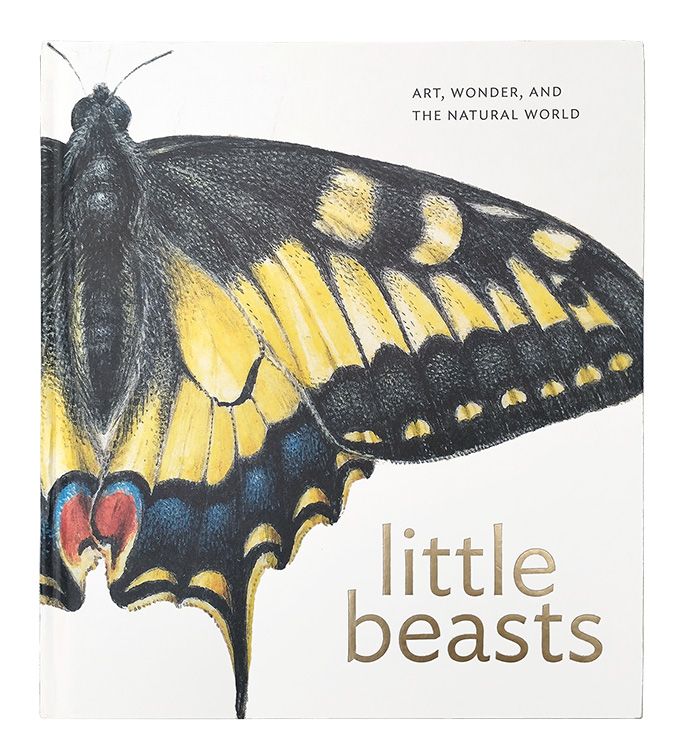Member Spotlight: MaryBeth Hinrichs
– All illustrations © MaryBeth Hinrichs unless otherwise noted
My journey into scientific illustration has taken many unexpected twists and turns, detours of all kinds and sometimes flat-out halts, but I’ve learned along the way that any journey of value is worth the patience.
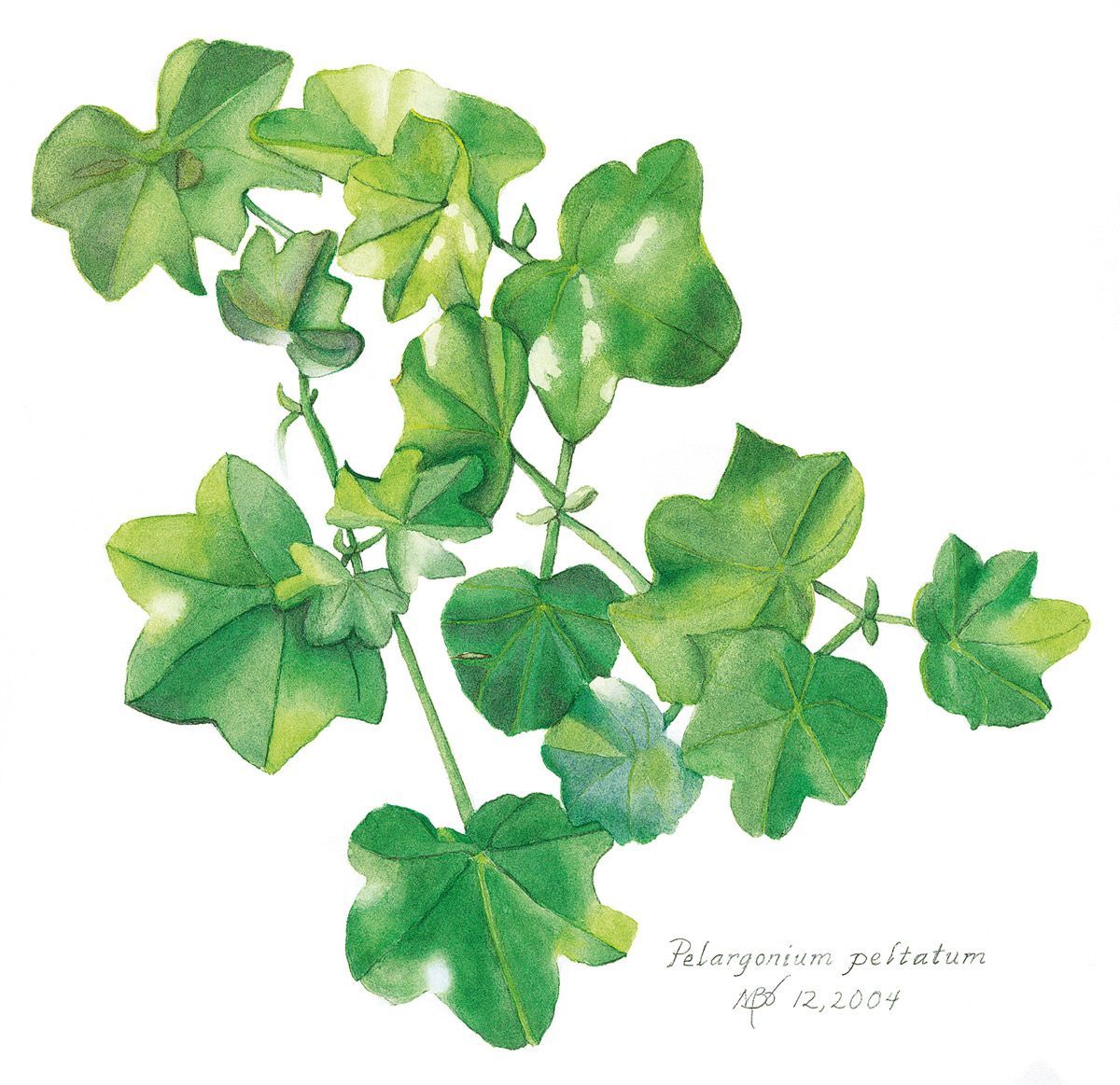
Cascading geranium (Pelargonium peltatum). Watercolor on Arches hot-press, © 2004.
Born and raised in St. Louis, MO, I was the youngest of three kids, much younger than my siblings. My dad was an electrician and my mom stayed at home with me until I started junior high and then went back to work as a salesperson in a local department store. Loving animals and learning of all kinds were always encouraged and both of my parents enjoyed creative pursuits in different ways. Dad loved to paint and draw when he had the chance (which, unfortunately, was not very often) and Mom expressed her artistic side more in 3D, sewing clothing for many special occasions—how many kids get to go out for Halloween as Bullwinkle’s buddy Rocky the squirrel with a very furry and realistic tail? Childhood memories included Dad reading the comics to me, pointing out how things were drawn, as well as peppering his reading with the most wicked Woody Woodpecker imitation ever, and trying to explain proportion to a very frustrated young artist who wanted to draw her beloved horses so they looked “real.” Luckily, I was always given plenty of paper and art supplies, so I had the opportunity to draw as much as possible.
I discovered science in grade school and loved learning about most of it, maybe physics not so much. High school found me on the science and math college track, which did not include any art courses. But two liberal arts courses were required to graduate, so in addition to a music literature course, I took a one semester art history course with many of my fellow science nerds. There were a few sporadic chances to draw in class with very little encouragement. I still remember the instructor informing us that “realistic, detailed illustration was just used for newspaper stories and National Geographic and was not true art—abstract was the true work of value.” As a result, I left any ideas of drawing in the dust and majored in chemistry and biology in college in Kansas City with an eye toward pursuing a medical degree. Big detour number one: I delved into biochemistry for graduate school instead (Georgetown University; my husband was in the Navy and worked in Washington, DC for Naval Sea Systems Command). After completing my master’s, I started working on the PhD program. The same organism that had flourished for me during the master’s research absolutely refused to grow for me any longer. After one particularly trying day when my mentor and I had discussed this puzzling development for the umpteenth time and I was feeling very trapped in the lab, my mentor sent me to the graphics department to pick up a conference poster for him. I vividly remember staring down at the illustrations there beneath the glass- covered countertop and
thinking, “I so want to do this, and I think I can!”
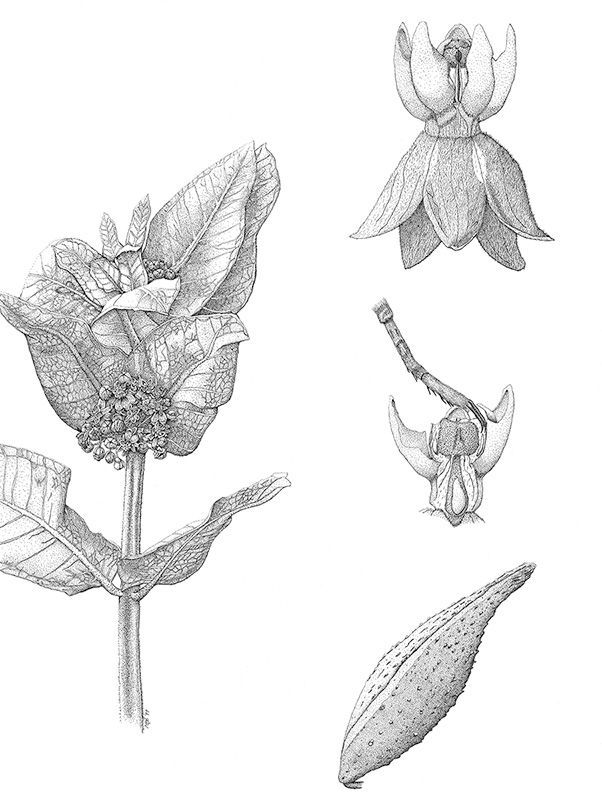
Milkweed (Asclepias Syriaca)on paper with 4x0 and 6x0 Rapidograph pens ©1999
At about this time, my husband and I were starting to look into moving back to the Midwest to be closer to family. While waiting to find work and a place to move, I started to take small art commissions with projects ranging from pen and ink laboratory manual illustrations (my first “real” scientific illustration assignment and introduction to tighter deadlines: 90 spot illustrations in two weeks) to acrylic decorative art and portraits.After moving to Minnesota in 1989, I knew I needed more instruction in art, but after starting a family, decided to attend a tech school two-year graphics program instead of pursuing a four-year degree. I soaked up as much information from the program as possible, including printing requirements and beginning digital layout and illustration (command-Z was a pretty new concept back then—yes, I’m that old), and equally as much from working part-time as a framing assistant for a professional framer. I was able to attend the 1990 GNSI conference in Minneapolis, commuting each day from our home. There I met Vera Ming Wong and Kris Kirkeby and was completely fascinated by a presentation from Nancy Halliday. I remember thinking, “I love these people!!” while watching her physically demonstrating how birds stroke their wings in flight. Another turn in the road: I found an announcement in the local paper about Vera giving a botanical drawing class at what is now Como Zoo and Marjorie McNeeley Conservatory. How cool—I could learn to draw something that didn’t move as fast as my kids did! Ultimately, this class segued into a certificate program in Botanical Illustration at Como. For a new twist, I started teaching as well as taking classes. I was fortunate to take classes from Don Luce and Marilyn Garber (before she started her own school for Botanical Art). The certificate program at Como did not flourish for long, but I was hooked on botanical illustration. I have been a part of the Great River Chapter of the American Society of Botanical Artists (ASBA) here in Minnesota, serving on the board for a couple of years.
More minor sporadic twists and turns are familiar to many GNSI members. Trying to balance work while raising a family can get interesting at times. Our kids do respect what I do, maybe after surviving experiences like Mom bringing home several
6-foot-long glass-front sample cases to illustrate prairie grasses’ root structure for a U of MN graduate student and having to walk v e r y s l o w l y—not run as usual—through the living room. And I never saw one poor neighbor kid again after our youngest screeched at him, “Don’t touch anything on that table, those are my mom’s art supplies!” But on the other hand, Mom also had to learn how to entertain a three-month-old while completing assignments (thank heaven for baby gyms), and to later on exercise a great deal of creativity explaining how some ”toddler enhancements” in big black marker appeared sprinkled throughout a sketch. Several years ago, I experienced a few unexpected health issues that clarified for me how I wanted to move forward in my life and career. I reassessed where I was, pulling back from many volunteer positions I had accumulated while our kids were young and started to focus on enhancing my skills in both traditional and digital media as well as evaluating what mark I wanted to leave with my work. I also finally took to heart that sketching as much as possible would not only help me improve my work, but had become vital to me just being me. I’ve become a devotee of No Excuses Art Journaling by Gina Rossi Armfield and several GNSI Great Plains members will be happy to tell you I may have a slight or not-so-slight addiction to washi tape.
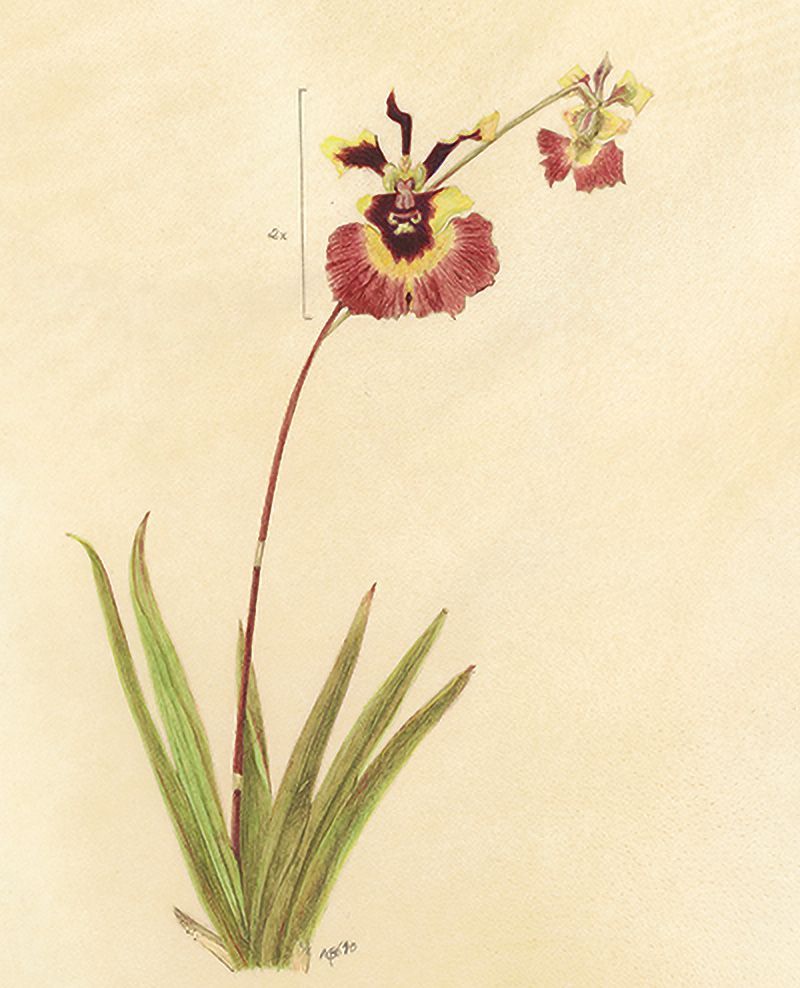
Orchid, watercolor on Vellum ©2010
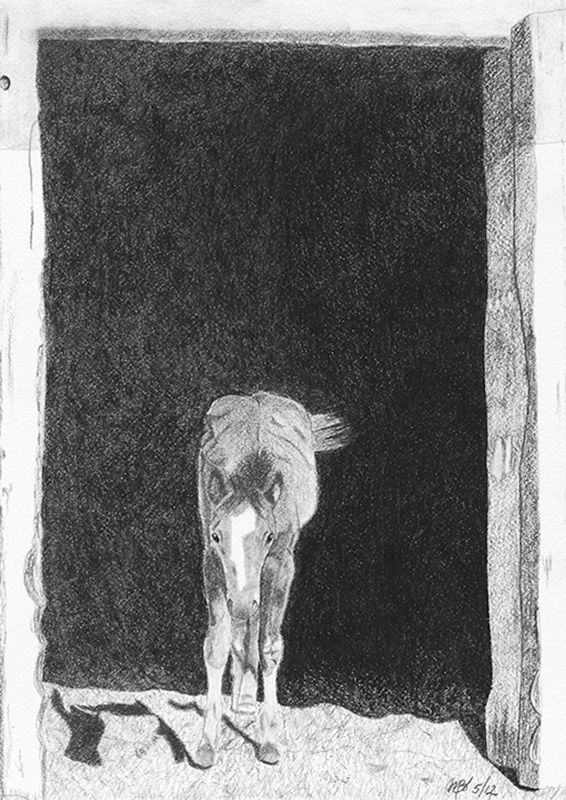
Sketch of a newborn foal in graphite
on paper, © 2012
Volunteer opportunities in GNSI are another matter. Over the years, I’ve been fortunate to work on the courses and books list, the membership brochure, and recently with Karen Ackoff on the most recent revision of the GNSI Technique Sheets.
Two volunteer opportunities that I wouldn’t/won’t give up at this point are being on the Education Committee for GNSI as long as I’m needed and the chance to continue to foster development of the GNSI Drawing Portal (formerly the Drawing Kit). After much research and reflection, this project has evolved into two components. The quick-start portion consists of a Get started drawing as quickly as possible” how-to program, available at this point as steps on the under-construction website, as well as lesson plans for ages two to infinity shared by several very generous GNSI members. This part of the program is geared toward adults, kids in school, after school programs, community programs, nature centers,
etc. I’m hoping that eventually we can have You Tube tutorials and materials for downloading to better serve the public, especially those who are home-schooled. The second component is a recognition that many of our members are already heavily involved in teaching all ages of people how to draw and keep nature journals to better appreciate science and the natural world. In this portion we will regionally list contact information (no ads or endorsements) for those GNSI members who either at least partially make their living by teaching or who volunteer in different venues to do so. I’ve learned so much from being a member of GNSI; I hope this will be a way to give back and let more of the public know of this great organization and the possibilities for careers for interested youth. Work on this project so far could not have happened without input and hard work from fellow GNSI members Bethann Garramon Merkle, Liz Lockett, Kris Kirkeby, Gretchen Halpert, Lesley Switendick, Andrea Lofthouse-Quesada, Gail Guth, Sara Taliaferro, Mary Ellen Carsley, Jane Neroni, Sue Burrus, Suzan Wallace and the very patient and dedicated Kathleen Marie Garness. If I’ve forgotten to mention anyone else, please forgive me.

Sketchbook spread of Riverfront Park in Salem, OR, rendered in watercolor and pen on paper, © 2018.
Oh, by the way, if any of you have the opportunity to join a group or GNSI chapter, do it. That’s the best way to interact with “your kind of people.” I even did a stint as Treasurer for the Great Plains chapter. They put up with my number ineptness and I had opportunities to take great workshops, experience new things (I can tell just how windy it is and how lousy the weather is by how the wind farms in western Iowa look) and make life-long friends. I’ve been told that I will remain a member of the chapter even after we move soon to Washington state. I’ve already subjected the Pacific Northwest chapter there to my first attempt at a techniques blog. End of advertisement for chapters, for now.What’s in the future? Besides the move mentioned above and subsequent discoveries to make in our new area, I hope to continue my eclectic slate of projects (the classic ADOS approach to work: Attention Deficit, Ooh: Shiny). Right now I have the privilege to illustrate the first of several books about a wonderful state park near our new home, design and illustrate a handout for horseback riding students about the bone structure of horses, illustrate a nonscientific children’s book, and hopefully finish a life-size botanical plate about the endangered silversword plant of Hawaii (the subspecies of Argyroxiphium sandwicense found on Maui), plus maybe finally get a chance to illustrate a prairie rose (Rosa arkansana). Work also continues on the Drawing Portal, of course. I’ve also been trying to stretch my skills by field sketching semiwild horses in oils—wait, not botanicals?!—and playing with animation and 3D rendering digitally. I also hope to continue to improve my marketing skills. I’ve got a ton of work there, although I am making progress in finding out what works for me and what doesn’t. My husband is planning to retire before we move, but I feel I’m just getting warmed up, so no retirement for me. Speaking of husbands, I would be very remiss not to publicly thank him for all of his support of my less-than-conventional job! I could not have done any of this without him.
There’s just so much to learn and try to pass on about the natural world through illustration and venues like the Drawing Portal. My biggest goal is to do my best to pass on my excitement about the cool organisms and processes I get to learn about and draw.
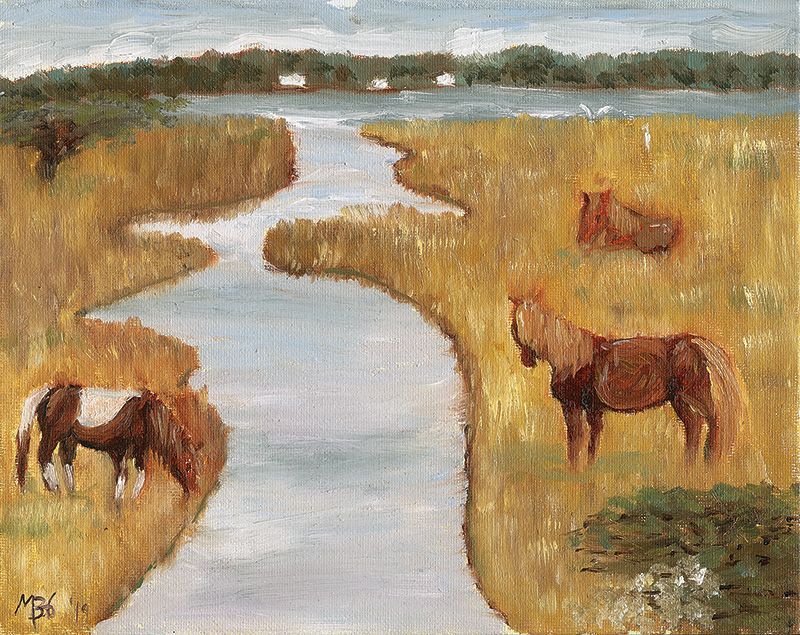
Oil sketch of horses in wetland,
© 2019.
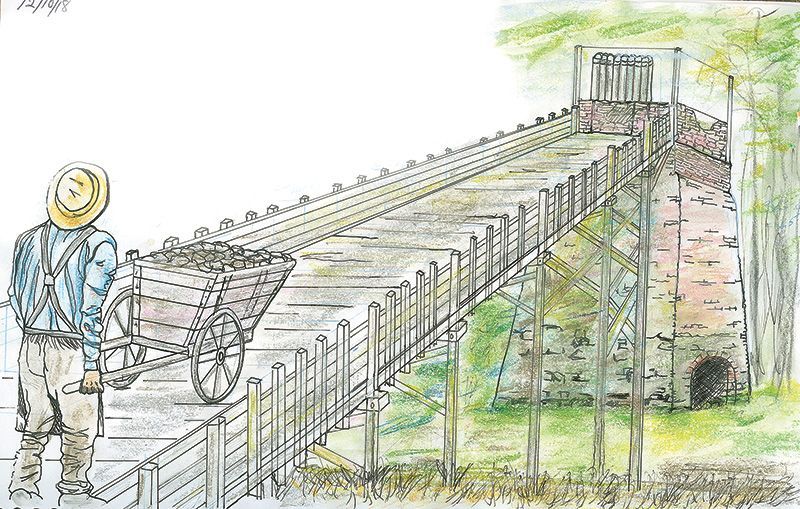
Concept sketch of Furnacetown, MD, in watercolor and pen on paper, © 2018.
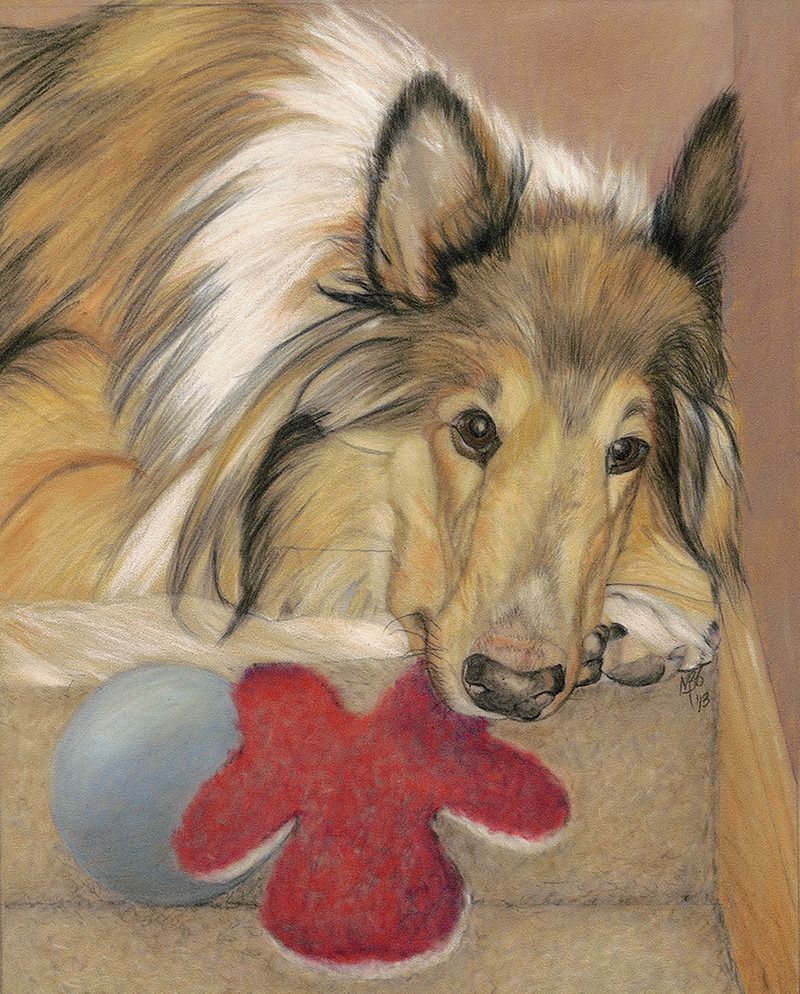
Above: My sketching buddy. Pastel on Pastelmat, © 2013.
